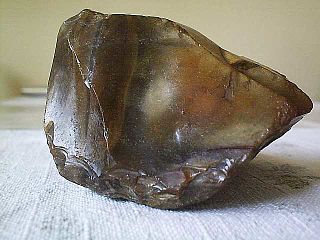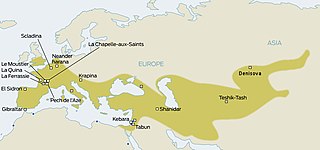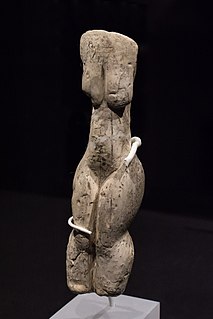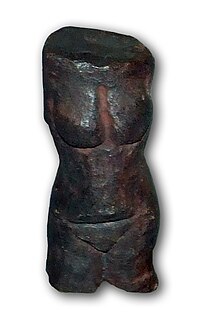 W
WA bog body is a human cadaver that has been naturally mummified in a peat bog. Such bodies, sometimes known as bog people, are both geographically and chronologically widespread, having been dated to between 8000 BCE and the Second World War. The unifying factor of the bog bodies is that they have been found in peat and are partially preserved; however, the actual levels of preservation vary widely from perfectly preserved to mere skeletons.
 W
WA byre-dwelling is a farmhouse in which the living quarters are combined with the livestock and/or grain barn under the same roof.
 W
WArchaeology is promoted in Jersey by the Société Jersiaise and by Jersey Heritage. Promotion in the Bailiwick of Guernsey being undertaken by La Société Guernesiaise, Guernsey Museums, the Alderney Society with World War II work also undertaken by Festung Guernsey.
 W
WA chamber tomb is a tomb for burial used in many different cultures. In the case of individual burials, the chamber is thought to signify a higher status for the interred than a simple grave. Built from rock or sometimes wood, the chambers could also serve as places for storage of the dead from one family or social group and were often used over long periods for multiple burials.
 W
WThe Clactonian is the name given by archaeologists to an industry of European flint tool manufacture that dates to the early part of the interglacial period known as the Hoxnian, the Mindel-Riss or the Holstein stages. Clactonian tools were made by Homo heidelbergensis.
 W
WEarly Christian inscriptions are the epigraphical remains of early Christianity. They are a valuable source of information in addition to the writings of the Church Fathers regarding the development of Christian thought and life in the first six centuries of the religion's existence. The three main types are sepulchral inscriptions, epigraphic records, and inscriptions concerning private life.
 W
WFerriter's Cove is a small bay located at the westernmost point of Dingle Peninsula, in County Kerry, Ireland. It is in the Dún Urlainn (Dunurlin) parish and electoral division of the Dingle rural area.
 W
WThe Gold lunula is a distinctive type of late Neolithic, Chalcolithic or early Bronze Age necklace or collar shaped like a crescent moon. They are normally flat and thin, with roundish spatulate terminals that are often twisted to 45 to 90 degrees from the plane of the body. Gold lunulae fall into three distinct groups, termed Classical, Unaccomplished and Provincial by archaeologists. Most have been found in Ireland, but there are moderate numbers in other parts of Europe as well, from Great Britain to areas of the continent fairly near the Atlantic coasts. Although no lunula has been directly dated, from associations with other artefacts it is thought they were being made sometime in the period between 2200–2000 BC; a wooden box associated with one Irish find has recently given a radiocarbon dating range of 2460–2040 BC.
 W
WGolden hats are a very specific and rare type of archaeological artifact from Bronze Age Europe. So far, four such objects are known. The objects are made of thin sheet gold and were attached externally to long conical and brimmed headdresses which were probably made of some organic material and served to stabilise the external gold leaf. The following golden hats are known as of 2012:Golden Hat of Schifferstadt, found in 1835 at Schifferstadt near Speyer, c. 1400–1300 BC. Avanton Gold Cone, incomplete, found at Avanton near Poitiers in 1844, c. 1000–900 BC. Golden Cone of Ezelsdorf-Buch, found near Ezelsdorf near Nuremberg in 1953, c. 1000–900 BC; the tallest known specimen at c. 90 cm. Berlin Gold Hat, found probably in Swabia or Switzerland, c. 1000–800 BC; acquired by the Museum für Vor- und Frühgeschichte, Berlin, in 1996.
 W
WA grave field is a prehistoric cemetery, typically of Bronze Age and Iron Age Europe.
 W
WA hillfort is a type of earthwork used as a fortified refuge or defended settlement, located to exploit a rise in elevation for defensive advantage. They are typically European and of the Bronze Age or Iron Age. Some were used in the post-Roman period. The fortification usually follows the contours of a hill and consists of one or more lines of earthworks, with stockades or defensive walls, and external ditches. Hillforts developed in the Late Bronze and Early Iron Age, roughly the start of the first millennium BC, and were used in many Celtic areas of central and western Europe until the Roman conquest.
 W
WThe Levallois technique is a name given by archaeologists to a distinctive type of stone knapping developed around 250,000 to 300,000 years ago during the Middle Palaeolithic period. It is part of the Mousterian stone tool industry, and was used by the Neanderthals in Europe and by modern humans in other regions such as the Levant.
 W
WThe Löwenmensch figurine, also called the Lion-man or the Lion-human of Hohlenstein-Stadel, is a prehistoric ivory sculpture discovered in Hohlenstein-Stadel, a German cave in 1939. The German name, Löwenmensch, meaning "lion-person" or "lion-human", is used most frequently because it was discovered and is exhibited in Germany.
 W
WNeanderthals became extinct around 40,000 years ago. This timing, based on research published in Nature in 2014, is much earlier than previous estimates, and derives from improved radiocarbon-dating methods analyzing 40 sites from Spain to Russia. Evidence for continued Neanderthal presence in the Iberian Peninsula 37,000 years ago was published in 2017.
 W
WIn the Neolithic and Bronze Age British Isles, rock art was produced across various parts of the islands. Petroglyphic in nature, the majority of such carvings are abstract in design, usually cup and ring marks, although examples of spirals or figurative depictions of weaponry are also known. Only one form of rock art in Europe, this late prehistoric tradition had connections with others along Atlantic Europe, particularly in Galicia.
 W
WThe Spir Mountain Cairns are two well preserved Bronze Age cairns in Ångermanland, Norrland, Sweden, built as graves and burial monuments, with burial cists interred. The ancient site is located at the top of the mountain Spirberget by Lake Mosjön in the Grundsunda parish, north of Örnsköldsvik at the High Coast in Ångermanland. The name Spirbergsrösena was introduced by archaeologist Carl L. Thunberg as a formal name concept for the site in 2014 before a public lecture on behalf of the Swedish National Heritage Board, in connection with that year's Swedish national "Archaeology Day".
 W
WPředmostí (Skalka), situated in the north western part of Přerov, Moravia near the city of Přerov, is an important Late Pleistocene hill site of Central Europe.
 W
WThe Venus of Eliseevichi is a Venus figurine from the Epigravettian.
 W
WRidge and furrow is an archaeological pattern of ridges and troughs created by a system of ploughing used in Europe during the Middle Ages, typical of the open field system. It is also known as rig and furrow, mostly in the North East of England and in Scotland.
 W
WRoca dels Bous is an archaeological site located in Sant Llorenç de Montgai, in the Catalan Pyrenees, Spain. Since 1988 the Autonomous University of Barcelona and the UCL Institute of Archaeology study and record the fossil sequence of southern European Neanderthals who inhabited the area during the Middle Paleolithic approximately 50,000 years ago. The excavation team utilizes a worldwide unique digital system and various innovative technologies, that significantly improve the quality of the classification of the recovered objects. Roca dels Bous has as one of the first Paleolithic excavation sites in Spain established a visitor centre, that focuses on displaying the Prehistory research of the prepyrenees area.
 W
WRock art has been produced in Europe since the Upper Palaeolithic period through to recent centuries. It is found in all of the major regions of the continent. One of the most famous examples of parietal art is the Grotte Chauvet in France. The cultural purpose of these remnants of the Paleolithic and other periods of prehistoric art is not known. However, some theories suggest that, because these paintings were created in parts of the caves that were not easily accessed, it is unlikely that they were intended simply as decoration.
 W
WA roundhouse is a type of house with a circular plan, usually with a conical roof. In the later part of the 20th century, modern designs of roundhouse eco-buildings were constructed with materials such as cob, cordwood or straw bale walls and reciprocal frame green roofs.
 W
WEarly Bronze Age stone wrist-guards are found across Europe from around 2400-1900 BC and are closely associated with the Beaker culture and Unetice culture. In the past they have been variously known as stone bracers, stone arm-guards and armlets, although "stone wrist-guard" is currently the favoured terminology; and it's no longer thought that they were functional archer's bracers.
 W
WThe Venus figurines of Petersfels are several small female statuettes from the Upper Paleolithic era, carved from jet lignite. The tallest figurine is called the Venus of Engen. The figurines were discovered in the Petersfels caves near Engen, Baden-Württemberg, excavated in 1927–1932 by Eduard Peters und Volker Toepfer and then in 1974–1976 and 1978 by Gerd Albrecht. They stand between 1.5 and 4 cm tall and are about 15,000 to 11,500 years old, created during the Magdalenian era. They are housed in the Museums of Freiburg im Breisgau and Engen.
 W
WThe Venus of Hohle Fels is an Upper Paleolithic Venus figurine made of mammoth ivory that was unearthed in 2008 in Hohle Fels, a cave near Schelklingen, Germany. It is dated to between 40,000 and 35,000 years ago, belonging to the early Aurignacian, at the very beginning of the Upper Paleolithic, which is associated with the earliest presence of Cro-Magnon in Europe.
 W
WThe Venus of Petřkovice is a pre-historic Venus figurine, a mineral statuette of a nude female figure, dated to about 23,000 BCE in what is today the Czech Republic.
 W
WThe Venus of Willendorf is an 11.1-centimetre-tall (4.4 in) Venus figurine estimated to have been made around 25,000 years ago. It was found on August 7, 1908, by a workman named Johann Veran or Josef Veram during excavations conducted by archaeologists Josef Szombathy, Hugo Obermaier, and Josef Bayer at a Paleolithic site near Willendorf, a village in Lower Austria. It is carved from an oolitic limestone that is not local to the area, and tinted with red ochre. The figurine is now in the Natural History Museum in Vienna, Austria.
 W
WThe verracos, in the Iberian Peninsula, are the Vettones's granite megalithic monuments, sculptures of animals as found in the west of the Iberian meseta – the high central plain of the Iberian peninsula – in the Spanish provinces of Ávila, Salamanca, Segovia, Zamora, Cáceres, Ourense and the Portuguese provinces of Beira Baixa, Beiras e Serra da Estrela, Douro and Terras de Trás-os-Montes. Over 400 verracos have been identified.
 W
WThe verraco of the bridge in Salamanca, Spain, is an Iron Age stone statue depicting a bull, placed at the entrance of the Roman bridge. Verraco is a general term that refers to the stone statues of animals made by the Vettones, one of the pre-Roman peoples of the Iberian Peninsula. In Spanish the word verraco [beˈrako] means "breeding pig", but other animals such as bulls and bears were also represented.
 W
WA Viereckschanze is a rectangular ditched enclosure that was constructed during the Iron Age in parts of Celtic Western Europe. They are widespread in Germany, parts of northern France and also in some regions of the Iberian Peninsula, most notably in Portugal.
 W
WThe Vorstengraf in Oss is one of the largest burial mounds in the Netherlands and Belgium. The hill was 3 metres high and had a diameter of 54 metres.